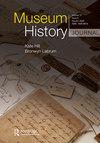The port city of Gdynia and its City Museum in the 1930s
IF 0.2
Q3 HISTORY
引用次数: 0
Abstract
ABSTRACT Political decisions taken after WWI resulted in significant geopolitical shifts in the South Baltic area. Due to the unfavourable stance of its new neighbour, the Free City of Danzig (Gdańsk), the reborn state of Poland decided to build its own independent port in 1920. The village of Gdynia, where the investment was located, underwent a serious transformation over a decade. It became a large urban centre of international economic significance: Poland's gate to the sea. The new Polish state began by strengthening its position in the region through searching for historic contexts and points of reference. Evidence of Polish and Slavic heritage was discovered and gathered. Folk tools and products were collected too. In the face of Gdynia and the region's economic and social transformations, they were gradually replaced. Some of the items ended up in the City Museum which was established in Gdynia. This article discusses how the institution strove to reinforce its leading role in the region.20世纪30年代的港口城市格丁尼亚及其城市博物馆
摘要第一次世界大战后的政治决策导致了南波罗的海地区地缘政治的重大转变。由于新邻国但泽自由城(格但斯克)的不利立场,重生的波兰于1920年决定建立自己的独立港口。投资所在的Gdynia村经历了十多年的严重转型。它成为一个具有国际经济意义的大城市中心:波兰的出海之门。新的波兰国家开始通过寻找历史背景和参考点来加强其在该地区的地位。发现并收集了波兰和斯拉夫文化遗产的证据。民间工具和产品也被收集起来。面对格丁尼亚和该地区的经济和社会转型,他们逐渐被取代。其中一些物品最终进入了位于格丁尼亚的城市博物馆。本文讨论了该机构如何努力加强其在该地区的领导作用。
本文章由计算机程序翻译,如有差异,请以英文原文为准。
求助全文
约1分钟内获得全文
求助全文

 求助内容:
求助内容: 应助结果提醒方式:
应助结果提醒方式:


